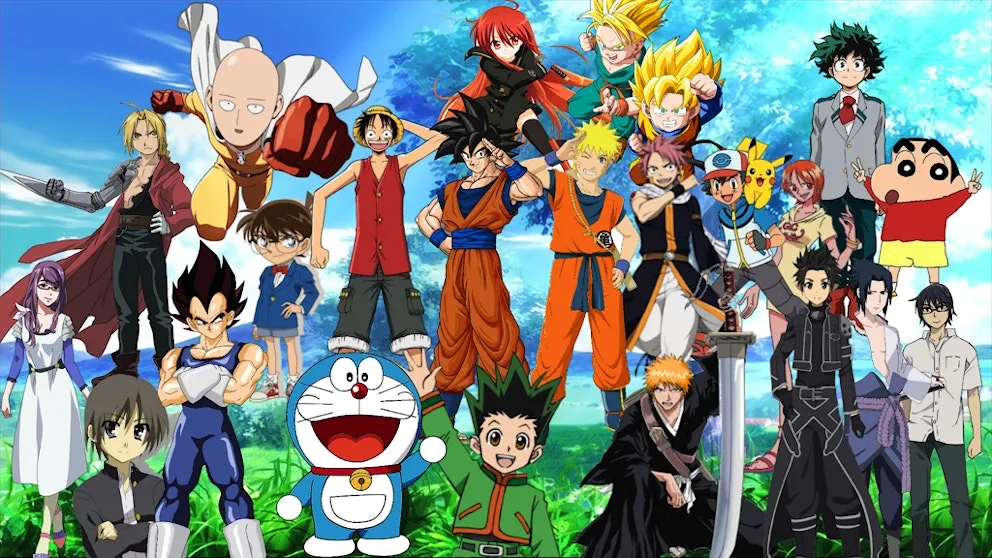Anime has become a worldwide sensation because of its amazing graphics, nuanced characters, and captivating narratives. It is a pillar of Japanese pop culture and has now spread throughout the world, impacting everything from entertainment to fashion. Nevertheless, there are particular difficulties in introducing anime to a global audience. While adhering to the creators’ intent, translators must handle humor, idioms, cultural nuances, and even incomprehensible elements like Japanese honorifics.
Fans may become offended, or the intended meaning may be distorted by a badly translated sentence or misunderstood context. Here, Japanese translation services play a crucial role, guaranteeing that anime maintains its authenticity while appealing to a wide range of viewers. These services preserve the integrity of anime while making it available to fans across continents.
What is localization?
Localization is a thorough procedure that includes content adaptation to make sure the target audience can relate to it in the local language on a cultural level. In fields like anime, where the original material reflects complex cultural subtleties that might not immediately resonate with people around the world, the localization process is essential. Localization involves changing not just the language but also other components like humor, cultural allusions, images, and even tempo, whereas translation just involves changing the text. This all-encompassing strategy guarantees that viewers or users in many locations will find the information engaging, natural, and accessible.
Language and Idiomatic Expressions
There are many honorifics, colloquialisms, and idiomatic expressions in the Japanese language that have profound cultural meaning. Honorifics like “-san” or “-sama,” for instance, might indicate familiarity, social hierarchy, or respect, although they don’t necessarily have exact English translations. These expressions must be carefully modified during localization to maintain the proper tone while yet being intelligible to the targeted audience.
Similarly, puns or jokes that have their roots in Japanese culture or language may not translate exactly. In these situations, translators have to come up with original ways to express the humor or meaning. By leveraging expertise in cultural nuances and linguistic intricacies, Japanese translation services bridge the gap between Japanese content and global audiences. This approach not only ensures clarity and cultural relevance but also enhances the appreciation of Japanese media, traditions, and storytelling worldwide.
Visual Adaptation
Adapting on-screen text, signage, and even visual symbols to the expectations of the target market is a crucial component of localization, particularly in anime. Anime features Japanese language, such as shop names, road signs, or backdrop ads. These must be translated with localized versions that make sense in the new setting for audiences who speak English.
Sometimes, translating these visual components involves more than just words; it may also involve style. For instance, in some adaptations, Japanese kanji on a café sign could be presented in a style that appears more “authentically” Western, using Western fonts and design elements that the audience is more accustomed to.
The Role of Translations in Growing International Anime Fanbases
Through translations, anime lovers all over the world can enjoy the stories in their tongues, bridging linguistic and cultural nuances. Fans may lose out on crucial story details, humor, or character depth if translations are poorly done, which could restrict anime’s appeal in international markets. Therefore, expert translations enhance the viewing experience and aid in the growth of devoted and varied fan bases for anime shows in other nations. Taking the assistance of a translation services agency also guarantees that anime content is culturally appropriate in addition to being grammatically correct. Translators may ensure that the anime appeals to viewers from various geographical areas and creates a stronger emotional bond.
Here’s how the Japanese anime can become accessible to global audiences.
Subtitles: These allow viewers to read the translated dialogue at the bottom of the screen, making the story accessible to those who don’t understand spoken Japanese.
Dubbing: This involves replacing the original Japanese voice with the voice of local actors who speak the target language, creating a localized audio experience.
Accurate Translations: Making Anime a Global Sensation
Let’s have a glance at examples of famous anime services that have become global sensations because of professional translation services.
Naruto
One of the best examples of how accurate translations have contributed to a Japanese anime becoming a worldwide sensation is Naruto’s success. The series’ excellent localization when it was first dubbed and translated for foreign audiences made sure that Western viewers could identify with the narrative while maintaining the core elements of Japanese culture. The careful translation of cultural nuances added to Naruto’s widespread appeal, making it a major entry point for anime in the US and other Western nations.
Demon Slayer
Demon Slayer’s worldwide appeal is evidence of how well-done translations may increase an anime’s appeal. The series’ captivating plot and stunning animation drew in millions of viewers. The expert translation was essential in accurately capturing the characters’ nuanced cultural and emotional states in a variety of languages. The popularity of Demon Slayer around the world, especially in Western nations, emphasizes how important good translation is to anime’s ability to cross cultural borders and win praise from all around the world.
Conclusion
The professional work of translation agencies is essential to anime’s worldwide success. Beyond simple word-for-word translation and subtitling and dubbing, these services handle intricate cultural nuances, modify humor, and guarantee that the spirit of the original work is maintained for audiences around the world. Translators can help artists tell their stories to a worldwide audience by overcoming linguistic and cultural barriers, which promotes a greater understanding of Japanese culture and enhances the world of entertainment.
